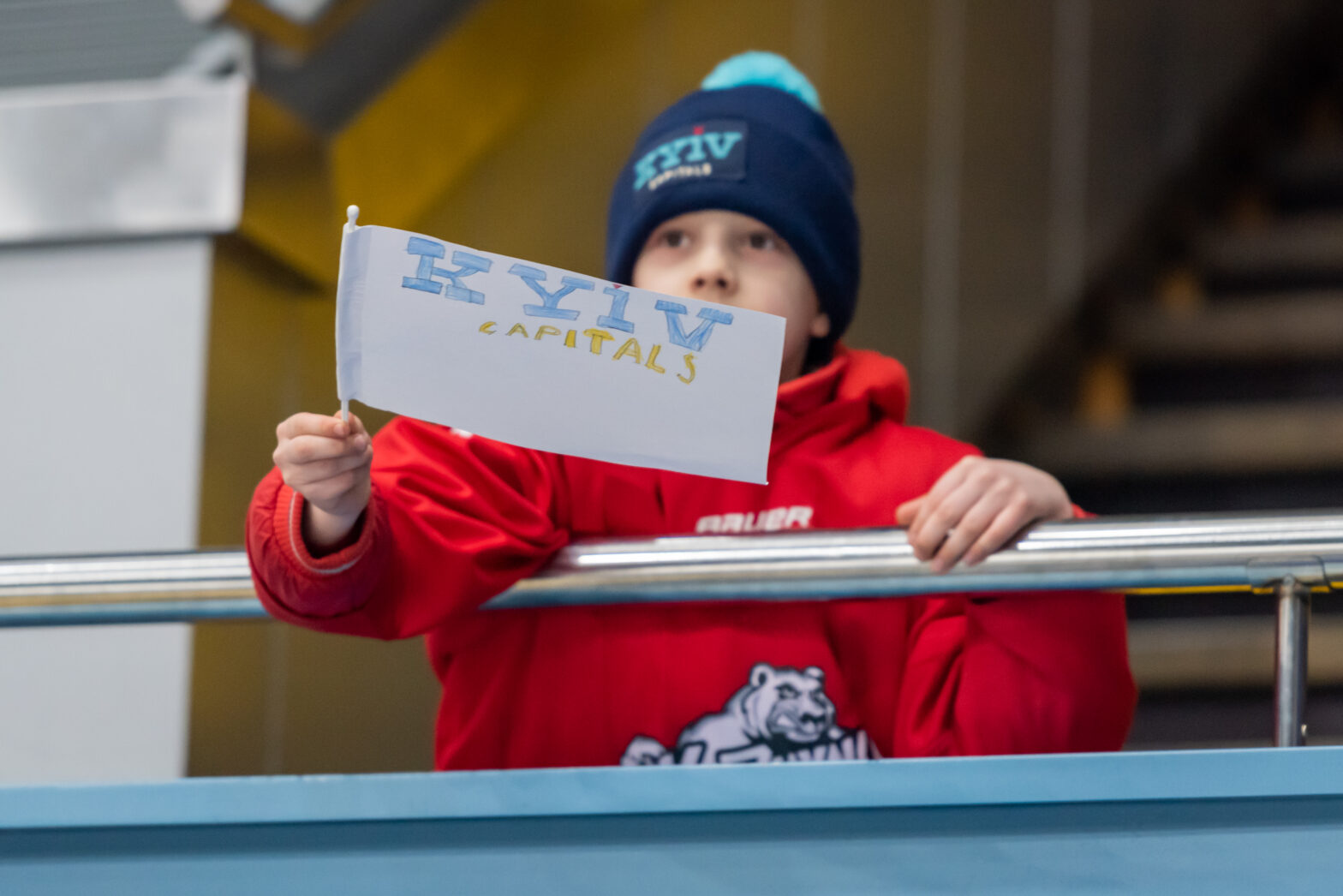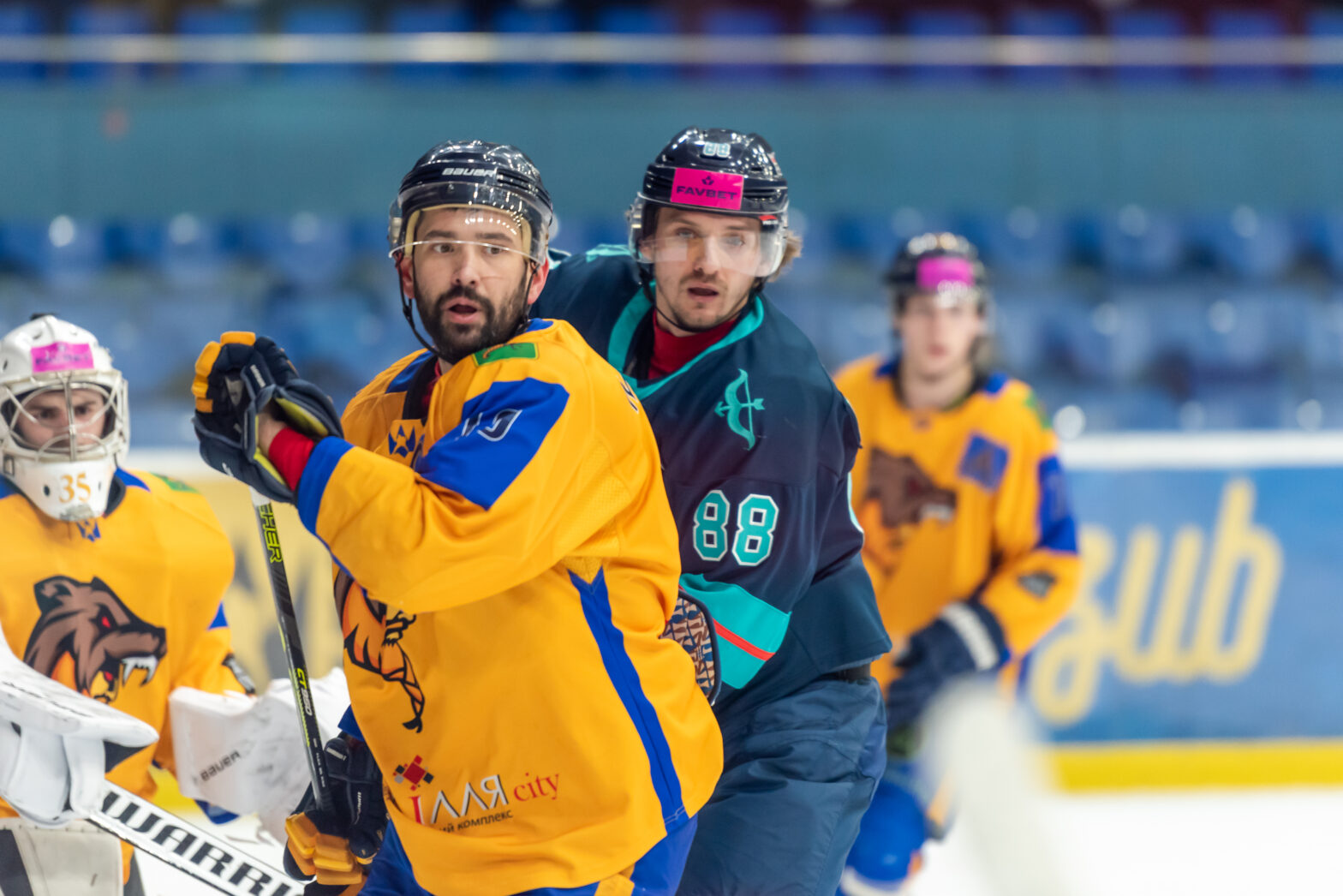Yurii Pavlov, a coach at Kryzhynka School with over 40 years of experience and a former hockey player of Sokil, shared insights into the most memorable moments in the school’s history. He fondly recalled his standout pupils and reflected on the evolution of hockey from the 1960`s and 1970`s to the present era.
Note: Yurii Pavlov, a native of Kyiv, has dedicated the majority of his life to his work at Kryzhynka School. Throughout his professional career, he proudly represented Sokil from Kyiv for 11 seasons, competing in both the elite and second-ranked divisions of Soviet hockey. Yurii declined numerous offers to work in russia, instead focusing on nurturing the talents of Ukrainian athletes. Dmytro Hrystych, Andrii Sriubko, Vadym Shakhraichuk, and Serhii Chernenko are just a few of the hockey players who embarked on their sporting journeys under Pavlov’s mentorship. Explore more about the remarkable career of this legendary Ukrainian coach in our article.
Yurii, you have an extremely long experience of working at Kryzhynka school. Tell me, which achievements during this period do you remember the most?
Of course, most of the events I remember are related to performances at the Soviet Union level. However, due to our war against russia, it may be best to refrain from discussing it at this moment. There were also memorable trips and tournament victories, including those shared with the Baltic countries. One notable experience was our participation in the national team of 1984 y.b. The competition was unique as it was held in a traveling format, allowing us to play in various arenas. An interesting rule was that failure to depart on time resulted in a technical defeat and a deduction of two points. Despite starting with a handicap of 11 points after the first round, we persevered, and the journey culminated in a decisive match in Riga that crowned us champions. I must applaud Serhii Chernenko, who formed an impressive attacking trio alongside Ihor Kuhut and Ihor Shamanskyi. Serhii’s dedication and skill are truly commendable, as evidenced by his continued success at the highest level, now serving as the captain of Kyiv Capitals.
How long have you been working in the structure of Kryzhynka school?
I finished playing for Sokil in December 1979. From January 1980, I had already started working at Kryzhynka. Passionate about hockey, I was unsure about which other specialty to pursue. Despite receiving an offer to work in russia, I chose to remain in Ukraine. After spending six months at Kryzhynka, I worked as a team coach in Kamianske for 1,5 years before eventually returning. And this time, I stayed for the long haul. I continue to work here, as I find it fulfilling. Witnessing the tangible results of coaching fills my heart with joy – serving as the greatest motivation.
Which students among those you have taught stands out to you as the most talented?
There were several standout individuals, with the current coach of the Ukrainian national team, Dmytro Hrystych, being one of them. During morning training sessions, my colleague, the trainer, and I divided the court in half. The group I coached was a year younger. It was evident from the game that Dmytro was a level above the rest, as he effortlessly stood out. Consequently, he shifted to the other side of the ice, much to our amusement. Even when training with older players, he excelled and stood out as one of the best. I must also mention Andrii Sriubko and Vadym Shakhraichuk, along with the previously mentioned player Serhii Chernenko, who are currently making a mark in the sport. The team born in 1984 was notably strong, with the first line of attack featuring Shamanskyi, Chernenko, and Kuhut displaying convincing performances. Beyond their physical prowess, these players exhibited remarkable mental strength. The dedication of these athletes was evident, with children even waking their parents at five in the morning to attend training sessions.
You played hockey in the 1960`s and 70`s. In your opinion, what is the difference between the game itself and the training process then and today?
Nowadays, hockey has evolved into a more modern sport. There is a strong emphasis on the continuous training and development of coaches, with individuals consistently engaging in advanced training courses. In Ukraine, it is mandatory to renew coaching licenses every four years, reflecting the importance of staying up-to-date with the latest coaching techniques. Unlike in the past, where coaches heavily relied on their own playing experience, there is now a wide array of coaching methods available. However, this progress is not without its challenges. One major issue is the lack of participation of children in hockey sections, which poses a significant obstacle to the sport’s growth. Additionally, the scarcity of ice rinks, coupled with the need to share resources with figure skaters and short track section, further complicates the situation. Infrastructure remains a persistent concern for the hockey community. On a positive note, young hockey players now have more training opportunities, as opposed to the limited three hours per week available in the past. The dedication required for success in hockey can be likened to that of an airplane pilot: one must spend ample time on the ice, just as a pilot needs to log sufficient hours in the air to hone their skills.
Previously, the school was based on NSC Olimpiyskyi. In your opinion, what is the main difference between the arenas on the territory of the stadium and the current one, which is located on Chalette Street?
The arenas themselves are comparable, with the ice quality at Olimpiyskyi being superior in my opinion. I preferred it over the ice at the Sports Palace. In addition to this, logistics play a major role. There are significantly more individuals interested in playing hockey in the city center compared to the outskirts. An ideal situation would involve having both these locations available. It is essential for each district of Kyiv to have its own arena. This approach would facilitate easier involvement of children in sports programs.
Competition at club level between professional teams is very well known. What is it like at the youth level?
In the past, we took part at the Kyiv youth championship with three teams competing in eight rounds. The competition was fierce, especially with the strong teams from Kharkiv joining in on the action at the national level. Now, it’s encouraging to see that nearly all Ukrainian championship teams have their own youth squads – an essential development. Additionally, it’s crucial to have a diverse range of age categories within the league structure, providing more opportunities for young players to hone their skills. Before focusing on improving their abilities, it’s essential for boys to build confidence on the rink first. Therefore, it’s important to establish a structured progression in their training and development.
Kryzhynka (U-19) has been winning in the Junior Hockey League for two years in a row. What helps to keep the winning brand at this level?
In order to maintain consistent success over time, it is crucial to have strong teams across all age groups, as these groups change annually. While the U-19 team has performed admirably this season, it is essential for other teams to also elevate their game. It is disheartening to witness the departure of numerous talented young hockey players once again. However, it is important to remember that while results are significant when it comes to young athletes, their attitude and development within the game are ultimately pivotal factors.
Now the girls who attend boys’ groups also play hockey at school. In the context of the resurgence of the women’s championship, how important is it to create exclusively girls sections?
This must be for sure. The women’s national team, under the leadership of Yevhen Alipov, has showcased impressive performance in international competitions. It is essential to foster the growth of women’s hockey from an early age. I vividly recall the humble beginnings of the Alipova`s sisters. Through dedication and perseverance, they have reaped the rewards of their hard work. From competing overseas not long ago, they have now become esteemed members of the Kyiv Capitals and represent the national team of Ukraine.
In your opinion, how can the popularity of Ukrainian hockey be increased to engage more children?
Earlier, there used to be a long line in the section with around one hundred eager hockey players showing up promptly for the 7 a.m. training sessions. We even had an evening group for two-way matches to select players for future games, with no barriers to advancement based on performance in training. However, nowadays, it’s a challenge to field even a full team. The motivation has shifted, as no matter how hard one trains, the chance to play is limited. In the past, the level of Ukrainian hockey was higher, with children looking up to players as idols and aspiring to join hockey sections. Parents were supportive, but now there’s a struggle to attract players. In the Obolon district, efforts to recruit students met with few takers due to distance and logistical issues. We need more arenas for accessibility. Moreover, modern distractions like phones and computers affect physical training and concentration levels, unlike in the past. Additionally, ongoing hostilities lead many children to move abroad, resulting in a loss of promising athletes. It’s essential to address these challenges to revive the enthusiasm for hockey and nurture young talent effectively.





